Chess Tactics: Complete Guide
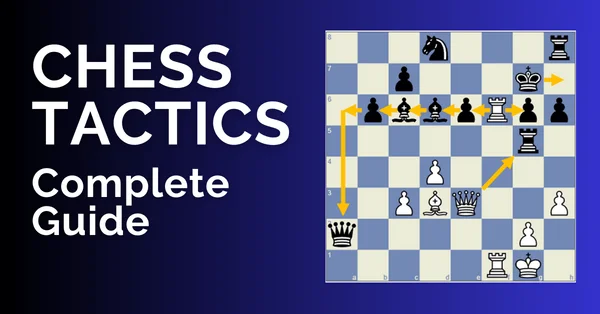
Chess Tactics is a short operation, using forcing moves that aim for an immediate concrete gain (such as winning material or checkmate). Tactics are very important in chess because strategy is built upon tactics. Any successful strategy cannot succeed without the support of underlying tactics. Therefore, it shouldn’t come as a surprise that the majority of chess games are decided by tactics. At the lower levels, tactics are especially prevalent and the quickest way to get better at chess is to improve our tactical ability.
Quick Summary
- Learning about tactics
- Fundamental Chess Tactics
- How to get better at tactics and how many tactics to solve
- Tactics vs. Calculation
- Advanced concepts
1. Seven Fundamental Tactics
Chess Tactics #1: Fork
If you attack two or more pieces at once, you have a good chance of capturing one of them. A fork is simply one piece or pawn moving to a square where it attacks two or more enemy pieces.
Let’s take a look at a simple fork. In the following position, black has played Qa1 and it forks both the king and rook.
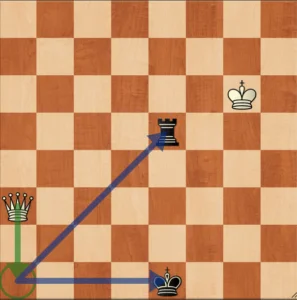
Since it’s a check, white has to defend the check and will lose the rook in the process.
Chess Tactics #2: Pin
An enemy can be pinned down in battles so their movement is restricted. A similar thing can happen to a chess piece. A pin keeps a piece from moving. So another way to look at this is that by pinning a piece you are temporarily making it lose its power.
Only Rook, Bishop, or Queen can give a pin when they attack an enemy piece and if that piece were to move, there would be an attack on another piece behind it.
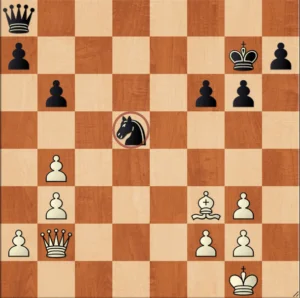
In this position, the bishop on f3 attacks the enemy knight on d5. If the knight were to move, the Black queen on a8 would be under attack. The knight is pinned to the queen.
An important thing to remember is that the pin is unlikely to last for long so it must be exploited as quickly as possible if any advantage is to be gained.
Chess Tactics #3: Skewer
In day-to-day usage, a skewer is a device that keeps objects together by piercing right through from top to the bottom. A piece is skewered when it is attacked ‘through’ another piece.
In the position below, Black just captured the pawn on d5 with the queen. Although immediately it doesn’t seem like there is an attack on the queen the bishop on g2 is ‘piercing’ through the knight on f3 with a straight eye on the queen and the bishop on b7.
In the position below, Black captured on d5 with the queen. Now if you notice the bishop on the a8-h1 diagonal Is looking at the queen indirectly through the knight. Also, another thing to notice is that the bishop on b7 is just guarded by the queen and is also in the line of fire.
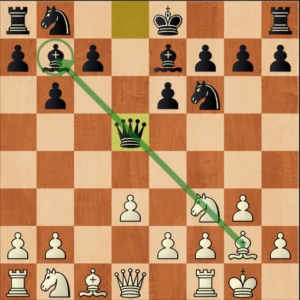
So white plays Ne1! The bishop on g2 now attacks Black’s queen and skewers the black bishop on b7. Loss of material is inevitable at this point.
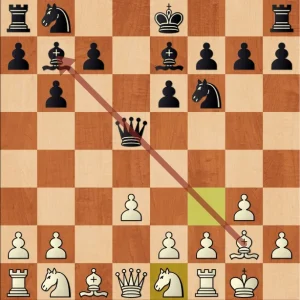
Chess Tactics #4: Double Attack
Attacking two things at once. The double attack is a very effective maneuver, often a deadly weapon.
After the moves 1. e4 e5 2. Qh5 g6? 3. Qxe5+
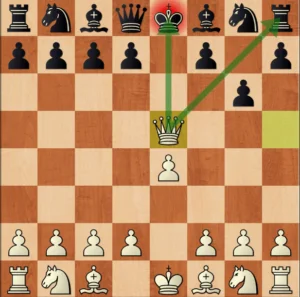
White’s queen is checking Black’s king and also attacking the rook on h8. It is a double attack. The position is now completely lost for black because he must defend against the check and then will lose the rook.
Chess Tactics #5: Windmill
If there was any tactic that embodied the idea of an unstoppable force, it is the Windmill. Windmill is rare in a practical game of chess but it’s so powerful that it can destroy the enemy position instantly.
It is a special type of discovered attack; it happens when a piece gives discovered checks repeatedly and the king has no choice but to repeat the position.
Let’s take a look at the following position:
Chess Tactics #6: Double Check
If your opponent attacks the king from two directions, the only escape is to move the king. If the king must move, the rest of the army is unable to move for that turn. Therefore, a double check is a very powerful form of a discovered check.
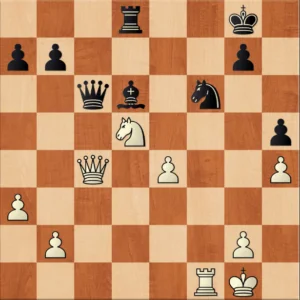
In the position, white plays Ne7++ Check from the queen and knight simultaneously. The king must move, and then the knight gets the Black queen on c6. Notice that the double-check froze all the remaining pieces, so the bishop could not take the knight, even though it meant losing the queen.
Chess Tactics #7: Discovered Attack
This tactic is a more subtle form of attack than the double attack but it can be just as equally effective. In this attack, a piece or pawn moves off a line to “discover’ an attack by another piece.
In the position, white has a winning move.
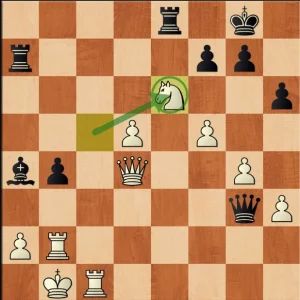
White wins by Ne6! This threatens Qxg7 mate and Qxa7 winning material
2. How to get better at tactics?
Solving tactical puzzles is the best way to improve tactics. Regularly solving tactics should be your goal when starting with tactics or even if you are an experienced player.
If you are a beginner player start with simple one-move tactics and gradually increase the difficulty level. If you increase the difficulty level too soon, it may hurt your confidence. Therefore, it is advisable to take it slow and solve each position by understanding them carefully.
3. How many problems to solve in a day
This depends highly on your skill and focus levels.
Ideally, the focus should be on the quality of the puzzles you solve rather than rushing to complete a set required number of puzzles.
4. Tactics vs. Calculation
While it is often fairly simple to detect the presence of a tactical motif, calculating the variations is frequently difficult, requiring considerable mastery. In other words, tactics are impossible without the calculation of variations.
So, if you want to be good at chess, you need to work on your tactics and your calculation skills. But, remember, they usually go together, so you’ll need to be able to use them both at the same time. It’s not really about one being more important than the other. They are both really important, and you need to be good at both to do well.
5. How to learn to spot tactics quickly?
Just like any other chess skill you need to train tactics regularly to spot them quickly. Masters have a vast internal database of tactical patterns in their minds that they are subconsciously able to access in a practical game. This helps them to quickly identify all the tactical possibilities in the position.
Therefore, our goal must be to take in as many different tactical patterns as possible to develop a ‘feel’ for tactics.
But when starting to play chess, how to know if a tactic exists in the position? There are some markers during a game that you can use to look for tactics:
- Pieces are poorly guarded.
- There are loose pieces (these are the pieces that don’t have adequate support).
- Pieces are lined up on ranks, files, or diagonals in ways that expose them to attack.
- The exposure of the king.
6. Advanced concepts
After studying and acquiring a good grasp of the fundamental tactics, you can start learning advanced tactical concepts. These concepts are built on fundamental tactics and are also called combinations. This is because they combine two or more tactical ideas. Let’s take a look at one such idea,
Zwischenzug or Intermediate move is a very useful advanced tactical idea.
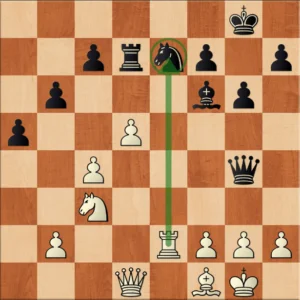
In the following position, white wins by Rxe7! because if the rook or bishop takes, we have Qxg4, or if Qxd1 White has the zwischenzug Re8+ forcing Kg7 and then Nxd1 leaves white a piece up.
Did you like this topic of Tactics? Look for more at 5 Tactical Positions to Solve Today as well as 5 Tactics to Find: Straight from Grandmaster’s Games.
https://thechessworld.com/store/product/hacking-tactics-with-fm-viktor-neustroev/



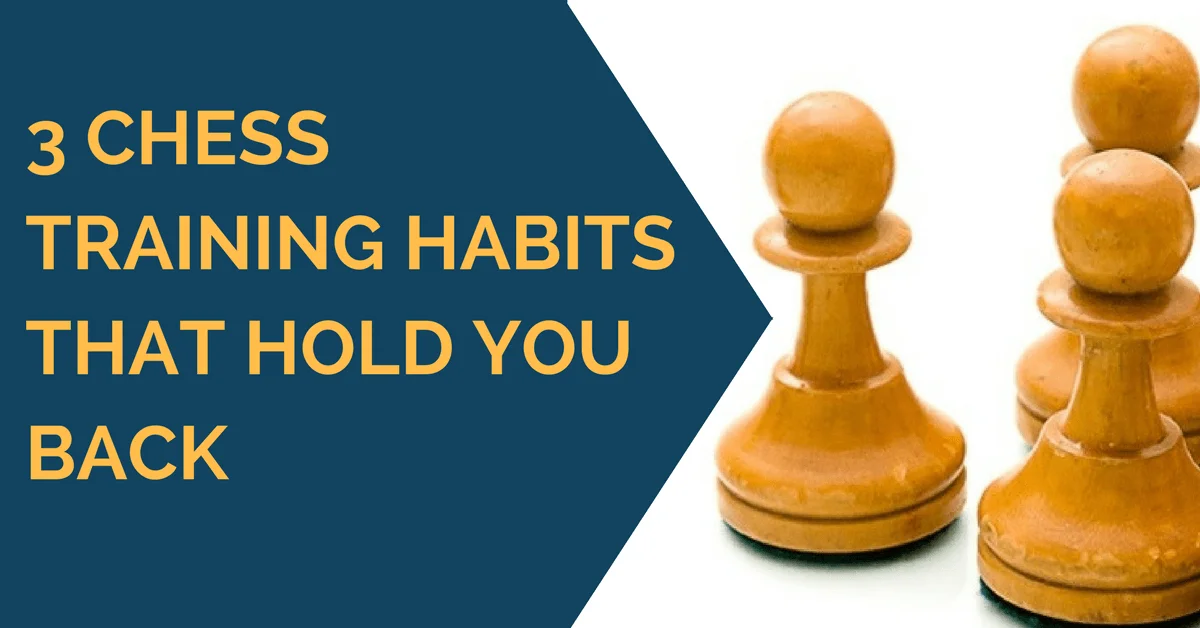
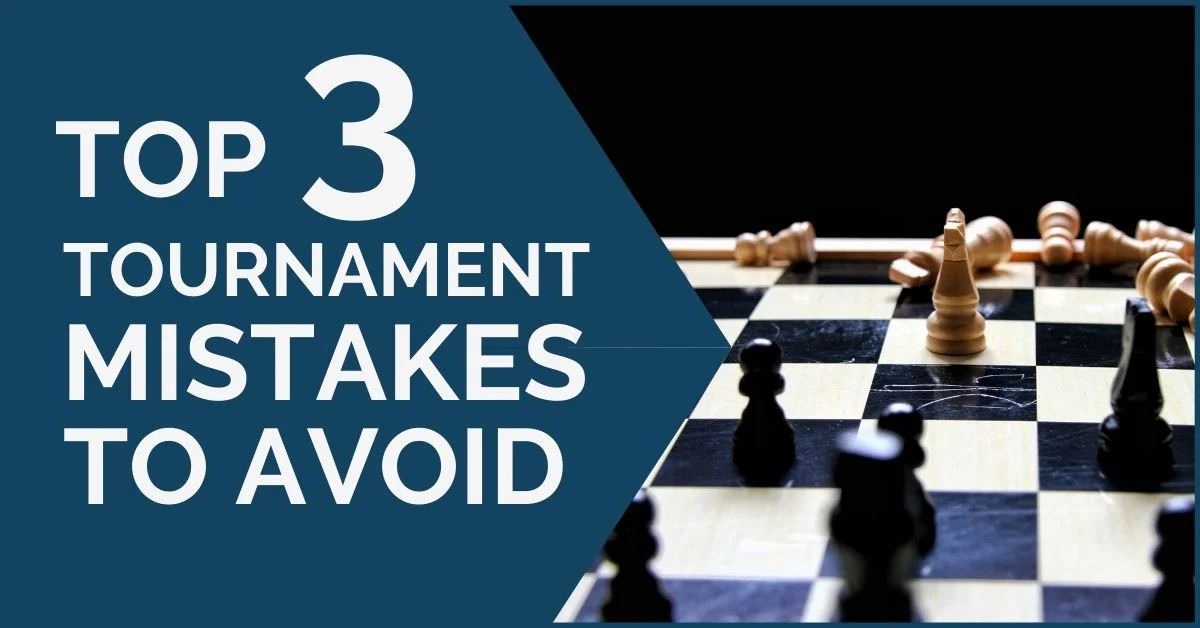
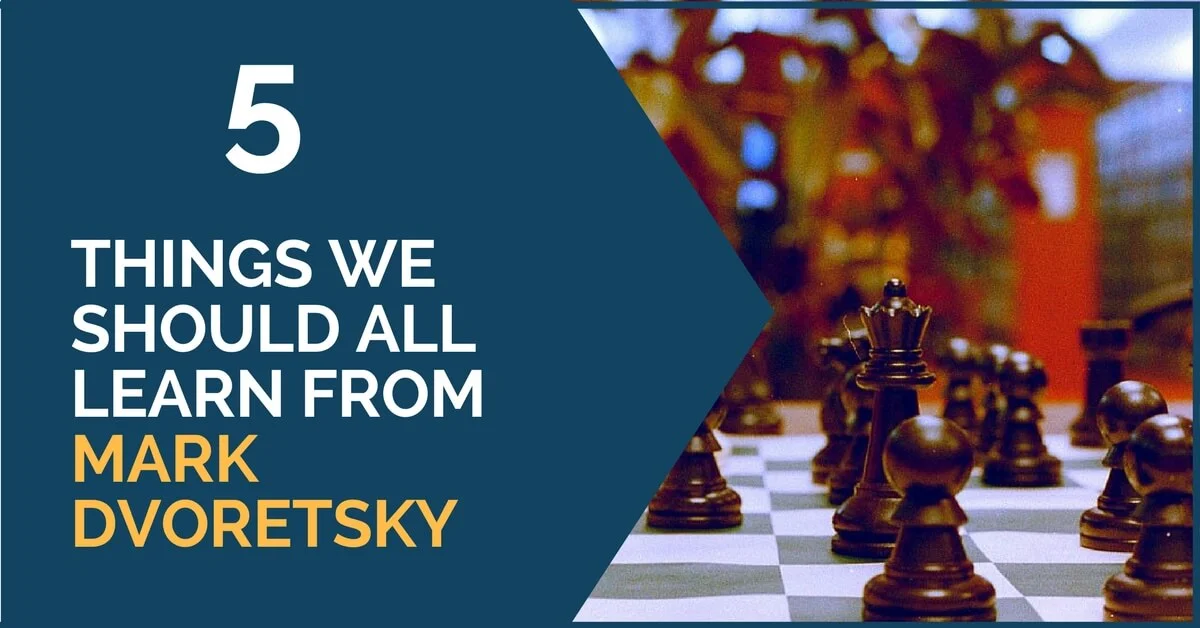




Comments: